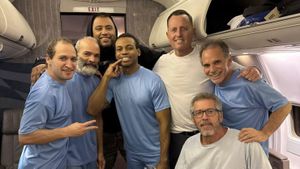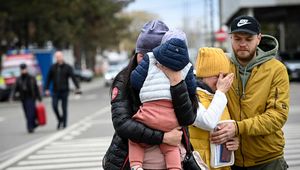The airspace surrounding Washington, D.C., has long been viewed as a complex and congested hub, raising fears of potential aviation disasters. Those concerns tragically came to fruition on the evening of January 31, 2025, when American Airlines Flight 5342 collided midair with a U.S. Army Black Hawk helicopter, resulting in the deaths of 67 individuals, including three military personnel and several aspiring figure skaters.
This incident marks the deadliest airline crash in the United States since 2001, prompting significant investigation and scrutiny from aviation experts and government officials alike.
The collision occurred around 9 p.m. as the Bombardier CRJ700 jet, operated by regional airline PSA for American Airlines, approached Ronald Reagan Washington National Airport. Simultaneously, the Black Hawk helicopter was flying along the Potomac River, participating in what has been described as routine annual re-training.
Initial reports reveal various factors under investigation. A flight recorder was recovered from the military helicopter, providing key data for investigators, as well as flight data and cockpit voice recorders from the commercial jet. The juxtaposition of these two flying machines raised immediate concerns about why the Army helicopter was reportedly flying 100 feet above its prescribed altitude limit of 200 feet.
"We have substantial amounts of information. We need to verify information to make sure it is accurate," said Jennifer Homendy, the Chair of the National Transportation Safety Board (NTSB). According to reports, staffing levels at the airport's air traffic control tower were deemed "not normal for the time of day and volume of traffic," contributing to the tragedy.
Retired airline captain and aviation expert Ross Aimer voiced his frustrations after the incident, stating, "This was a disaster waiting to happen. People have been warning about this for years, and we have finally seen it happen." Aimer noted the frequency of recent near-misses at Reagan National Airport, highlighting how the congested airspace presents challenges to even seasoned pilots.
Lawmakers made changes last year, easing restrictions and allowing airlines to introduce new nonstop routes. These changes have raised concerns about the already precarious nature of air traffic within the congested corridors of Washington. The tragedies preceding the crash have intensified calls for stricter regulations on military flights near commercial airspaces.
Defense Secretary Pete Hegseth confirmed during earlier briefings, "There was some sort of elevation issue with the Army helicopter, and it is currently under investigation." Despite the clear weather conditions during the crash, concerns from air traffic controllers about the proximity of the aircraft were raised moments before impact. Less than 30 seconds before the collision, air traffic controllers communicated with the Black Hawk pilot, instructing him to pass behind the incoming American Airlines jet. The pilot acknowledged seeing the aircraft before the fatal accident occurred.
Jim Brauchle, former U.S. Air Force navigator and aviation attorney, echoed concerns about the close quarters pilots face when operating near the nation's capital, stating, "Even if everybody is doing what they are supposed to be doing, you’ve only got a few hundred feet separation between aircraft coming in to land and the many helicopters along those routes." The danger becomes particularly pronounced at night, when city lights hinder visibility for pilots.
Local experts and some U.S. lawmakers are sounding alarms over potential increased congestion as new route expansions take effect. This has led to renewed discussions about the adequacy of air traffic control staffing and the necessity for improved separation between commercial and military flights. "The system is stretched to its limits, and yet additional routes continue to be introduced. We need to prioritize safety over convenience," added Aimer.
Historically, Washington D.C. has faced similar aviation challenges. This incident draws eerie parallels to the infamous 1949 collision, which resulted in the death of 55 people and marked the first major air disaster over the district.
Despite the federal government's commitment to investigating improvements, many aviation veterans express doubts about significant change. Former pilot Darrell Feller shared his own experience, recalling how difficult it was to visually navigate around the Potomac's bright lights, stating, "It scared me to think of how little visibility we had, especially when something could be coming down from above without warning.”
President Trump has weighed in on the cause of the tragedy, saying, "The helicopter was flying too high, by a lot. It was far above the 200-foot limit. That's not really too complicated to understand, is it?" His statements come amid criticism for diverting attention from the systemic issues present at the airport, leading to concerns about operating procedures.
Transportation Secretary Sean Duffy hinted at stricter controls, announcing FAA restrictions on helicopter traffic around Reagan National. This development follows increased scrutiny on air traffic controller workload, especially under circumstances where controller staffing was reduced, leading to potentially dangerous flights with limited oversight.
The upcoming weeks will be pivotal as investigators examine both recent regulatory changes and pre-existing protocols at the airport. The NTSB's findings will greatly impact future procedures for maintaining safety as air travel continues to expand.
While the crash's immense human cost is being mourned, many express hope the incident could catalyze much-needed reforms to prevent similar tragedies from occurring.



